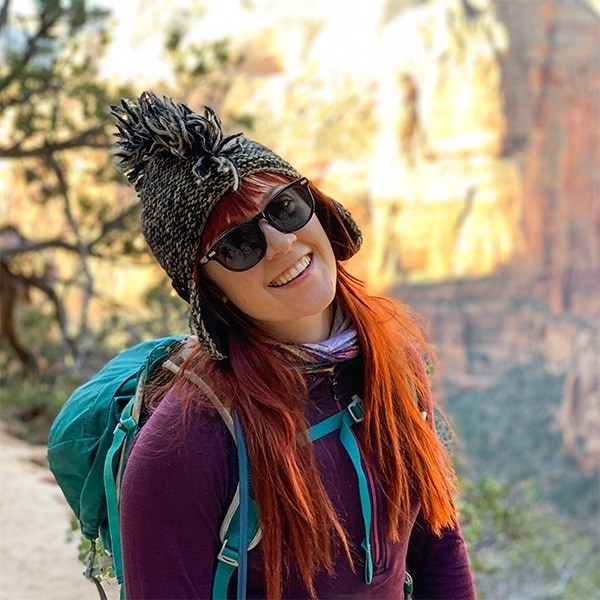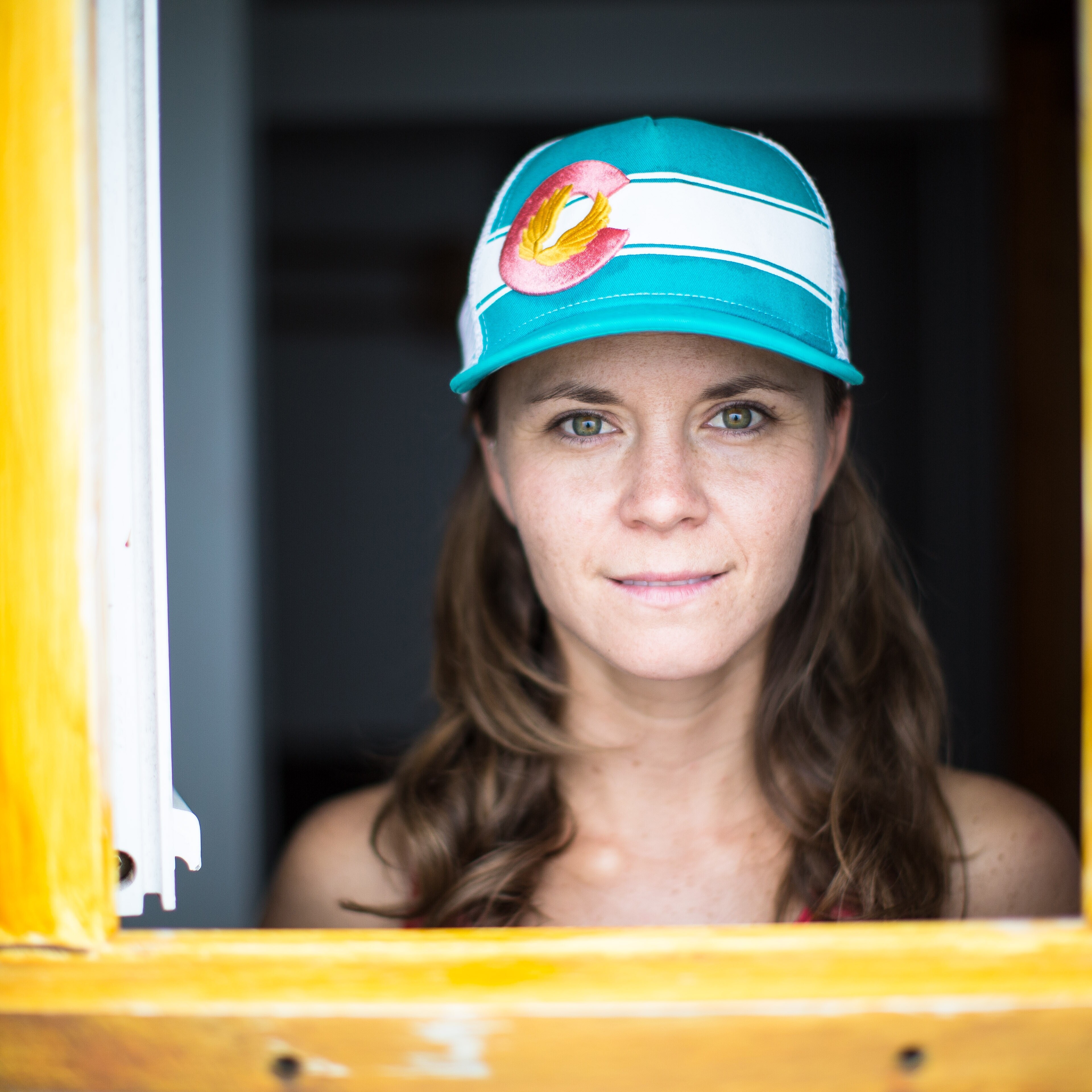Sure, a night out under the stars means leaving certain creature comforts at home, but it doesn’t have to mean crunching into a too-tight or too-short sleeping bag. The days of narrow, mummy-only sizing are over. Brands are updating the fit of sleeping bags to accommodate a wide variety of body shapes and sleeping positions.
Still, it can still be stressful to mire through a swamp of stats and data points to make a big purchase like a sleeping bag, which is why we’ve gone ahead and done some of the boring research for you. We asked two dozen co-op members of all sizes to test the best long, wide and inclusively sized sleeping bags available at REI. Over months, our member-testers assessed the fabric, filling and zipper quality of each, and when all was said and done, these were their definitive favorites. So make sure you're up to speed on how to choose a sleeping bag, check out our buying advice for wide bags, and then scroll down to see our top picks for inclusive-size sleeping bags.
Test Results
- Best All-Around Inclusive Size Sleeping Bag & REI Co-op Editors' Choice Award Winner: REI Co-op Magma 15 Sleeping Bag
- Best Wide Sleeping Bag for Car Camping & REI Co-op Editors' Choice Award Winner: Big Agnes Echo Park 20 Sleeping Bag
- Best Wide Sleeping Bag for Three-Season Backpacking: Mountain Hardwear Bishop Pass 15 Sleeping Bag
- Honorable Mention: Marmot Trestles Elite Eco 20 Sleeping Bag
Best All-Around Inclusive Size Sleeping Bag & Editors’ Choice Award Winner
REI Co-op Magma 15 Sleeping Bag
Score 95
Shape Mummy
Shoulder girth Varies by size, 54-71 inches
Hip girth Varies by size, 45.5 – 63.5 inches
Temperature rating 15°F
Insulation 850-fill-power water-resistant down
Sustainability attributes bluesign approved materials; Climate Neutral brand
Finding a down sleeping bag that comes in a whopping nine different sizes is virtually unheard of, but the REI Co-op Magma 15 manages to hit that high bar with plenty of great features and technical fabrics, to boot—all of which earned it a 2025 Editors' Choice Award. In early 2024, REI revamped its bestselling sleeping bags to offer more inclusive sizing, using 150,000 fit scans so that campers can dial in that oh-so-elusive perfect fit, sleep better and carry less weight. (Read more behind the design).
Many of our testers noted that the bag’s ultra-soft, recycled ripstop nylon was cozy enough to completely cocoon inside on especially cold nights. "This is my new go-to bag for colder backpacking trips," says one member who tested a long-wide size on the Washington coast, among other places. "I liked the extra width. The bag kept me really warm." Paired with its bluesign-approved 850-fill-power down and cinchable hood, the Magma 15 packs a toasty punch while remaining lightweight enough to be considered an ultralight sleep sack.
“This bag brought my pack weight down 6 ounces,” says another gear tester who backpacked with a medium-wide Magma 15 for three nights in Illinois. And, even with the weight savings, she noted that the bag still felt luxurious. “It's incredibly comfortable and feels like you are sleeping in a cloud,” she says.The bag is easy to adjust for efficient venting, too, with a zipper path that wraps around the front of the chest for quick access. “I really appreciated the quality of the zipper, it was easy to pull from the outside and the inside of the bag, without catching on any of the fabric,” says another member-tester in Washington state who took the bag on backpacking trips in Olympic National Park and near the Alpine Lakes Wilderness.
The main downsides? Some testers didn’t love that the Magma 15’s zipper is situated on the left side and thought the neck collar was unnecessary. And, because of the bag’s premium goose down filling and sustainable materials, it’s a bit pricier than other sleep sacks. One piece of good news: Unlike many sleeping bags on the market, REI’s Magma 15 remains the same price, regardless of the size you order. The Magma is also available in with a 30-degree rating. Buy the Magma 15 here.
Bottom Line: With an impressive nine sizes, all of which weigh well under 3 pounds, the REI Co-op Magma 15 Sleeping Bag combines superior warmth and comfort with earth-friendly down filling and shell materials.
Testing Stats:
- Nights out: 23
- Testing states: Illinois, Oregon, Washington state
- Best testing story: One tester in Washington state was impressed with how this sleep sack could easily stuff into her carry-on bag for a flight without being too bulky
Best Wide Sleeping Bag for Car Camping & Editors’ Choice Award Winner
Big Agnes Echo Park 20 Sleeping Bag
Score 95
Shape Rectangular
Shoulder girth 80 inches
Hip girth 74 inches
Temperature rating 20 degrees (F)
Insulation Synthetic
Weight 4 lbs. 15.4 oz.
You can't take your bedding to the campground, but this nest is the next best thing. The ultraspacious, feature-rich Big Agnes Echo Park 20 is the roomiest bag in our test with a 74-inch hip girth—more than a foot and a half broader than most standard sleep sacks. And that's not the only reason it's a REI Co-op Editors' Choice Award winner. "I don't have to adapt my 2X body to fit in this bag as I have in the past," notes one Montana-based tester. "I have a 40-inch waist, and the Echo Park is still a luxury fit." The circumference around the shoulders in the Echo Park 20 is just as palatial at well over 6 feet around. And thanks to double zippers, which allow entry from either side, you can flip the top down like your comforter at home. "Better than a five-star hotel," affirms one editor.
But the real highlight of the Echo Park 20 is its buffet of features. Unzip either side for easy ventilation on toasty evenings. Or on cool nights, use the two hand pockets in the top corners to pull the bag snug around you like a cocoon. Sneak a pillow (or get creative with unused layers) into a specific sleeve in the hood to secure a cushion beneath your head that won't slip out in the night. Another sleeve on the bottom of the Echo Park 20 secures a sleeping pad (up to 30 inches wide) so you won't slide off your mat. "If I could give the features an 11 out of 10, I would," says another tester. "Everything makes sense. It's such an intuitive design."
More than two and a half pounds of synthetic insulation in the Echo Park 20 should keep most sleepers warm on three-season pursuits. But all that cushion, combined with spacious dimensions and a multitude of features, mean this bag isn't all that light or packable. (One tester grumbled that the sleeping bag couldn't fit in his motorcycle paniers, even when packed away in its included 20-inch stuff sack.) That's the trade-off for lavish living. Buy here.
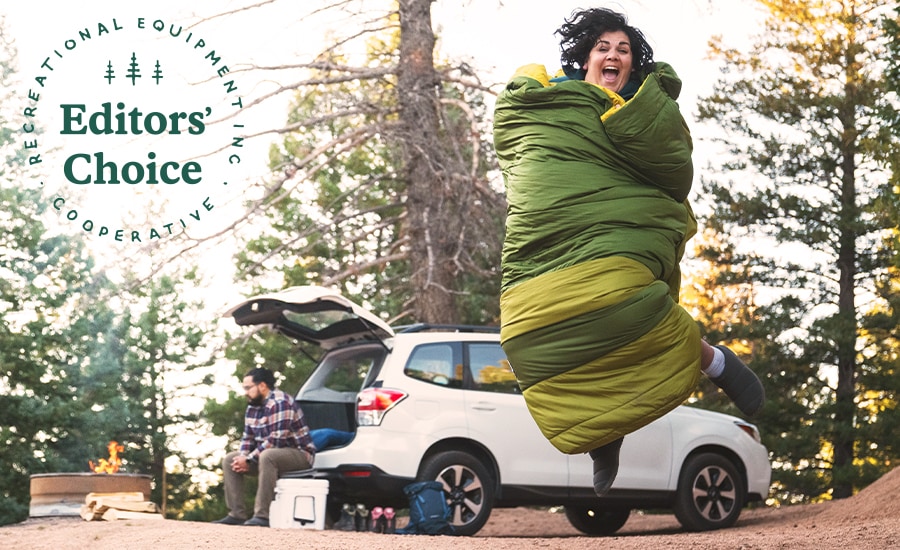
Bottom Line: Sleep in the lap of luxury with the Big Agnes Echo Park 20, a roomy sleeping bag with a host of features that make the car campground feel like home.
Testing Stats:
- Nights out: 21
- Testing states: Colorado, Montana and Wyoming
- Best testing story: On a paddling trip on the Yellowstone River, one tester reeled in the sort of rainbow trout that lends itself to a story. "I camped on the shoreline without a tent that night, relaxing in the Echo Park and dreaming of my fish," he reports. "It was the highlight of my summer."
Best Wide Sleeping Bag for Three-Season Backpacking
Mountain Hardwear Bishop Pass 15 Sleeping Bag
Score 90
Shape Mummy
Shoulder girth Varies by size
Hip girth Varies by size
Temperature rating 15°F
Insulation 650-fill-power down
Weight Varies by size and length
Looking for a bag that you can continue using when the chill sets in? The uber-toasty Mountain Hardwear Bishop Pass 15 might be the one for you. Responsibly sourced down pairs perfectly with a durable water repellent (DWR) finish and an anatomically shaped footbox to keep campers warm and dry, even when the weather outside takes a turn for the worse. "The lake froze overnight, and I found crystallized condensation on my tent walls in the morning, but my toes were still warm in this sleeping bag," reported one Colorado-based tester after a shoulder-season trip in the Gore Range.
Apart from its superior warmth, which is aided by a baffled draft collar and cinchable hood, several of our testers loved how luxe the bag felt. “When I closed my eyes to sleep, I could not believe this was a sleeping bag—it felt like heavenly sheets in a 4-star luxury hotel,” says our tester who tried the bag on a two-night backpacking trip in Old Logger's Path in Pennsylvania. He and others noticed—and loved—that the Bishop Pass 15 sports a reliable, no-snag #5 YKK zipper. One tester even reported actively trying to snag the zipper, to no avail, by repeatedly opening and closing his bag. Bonus: He was also thoroughly impressed with the “magical” glow-in-the dark pull tab, which makes it a breeze to locate your zipper in the night. On a three-night backpacking trip in the High Sierra, another tester appreciated the Bishop Pass’ lightweight profile and “silky liner fabric,” which is made with 30-denier plain weave nylon. The bag’s outer lining is made with a water-resistant ripstop nylon fabric that’s designed to keep campers dry, even if the inside of their tent develops condensation droplets. “Of the members of my group, I was the only one that didn't get chilly in the night, even with the wind!” says that Los Angeles-based tester.
For all the lightweight warmth and super-soft fabric this sleeping bag offers at an excellent price point, its mummy shape might still be a touch narrow for many side and stomach sleepers. If you’re looking for a sleep sack that comes in wider sizes, we’d recommend the Magma 15 Sleeping Bag, which offers up to 8.5 additional inches of girth. Buy here and here.
Bottom Line: With its awesome price point, toasty warmth and snag-free zipper, the mummy-shaped Mountain Hardwear Bishop Pass 15 is a fantastic sub-three-pound sleeping bag for three seasons of backcountry use.
Testing Stats:
- Nights out: 19
- Testing states: Colorado, Illinois, Pennsylvania, Utah
- Best testing story: While trekking the Old Logger’s Path in Pennsylvania, one tester endured a night of torrential rain and wind that ultimately ended with a tornado watch that, thankfully, never materialized.
Honorable Mention
Marmot Trestles Elite Eco 20 Sleeping Bag
Score 84
Shape Mummy
Shoulder girth 73 inches (women's), 76.5 inches (men's)
Hip girth 72 inches (women's), 71.5 inches (men's)
EN lower limit 7.9°F (women's), 21.6°F (men's)
EN comfort 20.3°F (women's), 32.2°F (men's)
Insulation Synthetic
Weight 3 lbs. (women's), 3 lbs. (men's)
"I finally feel like I fit in," announced one punny Virginia-based tester after a season in the Trestles Elite Eco 20. "That sounds superficial, but this bag gives me lightweight and efficient equipment like my smaller friends have." With the Trestles Elite, Marmot maintains a mummy shape (tapering at the feet) to cut bulk and weight but expands the dimensions that matter: shoulder circumference up to 76.5 inches (in the men's sizing) and hip circumference to 72 inches (in women's sizing). So even though it packs small (about the size of a gallon of milk) and weighs just 3 pounds, this sleep sack features enough interior space for a 2X camper. "The bag fit easily into my pack with my other gear. Loved the packed size and weight of this bag," says our tester who spent four nights camping along the river near his eastern Michigan home. "The bag fabric and features are comfortable," he adds. However, he and another tester, who backpacked two nights in the Lost Creek Wilderness in Colorado with the bag, found the Trestles Elite to be a bit too tight in the legs and feet.
This version of the Trestles Elite is different from its predecessor. First, Marmot uses a new HL-ElixR™ Micro synthetic insulation, which slashes the weight by almost a full pound from an earlier version. It's cleaner because the bag's synthetic fill, unlike the previous stuff, is made using fibers that are made up of 100% recycled materials. Another upgrade is the softer ripstop polyester lining (and shell) material; "it's softer than butter," says one tester.
Camping pros know that synthetic insulation tends to be heavier and bulkier than down (learn more about which insulation is right for you), but what it lacks in loft it makes up for in water-resistance and a much friendlier price. It's half the cost of other backpacking bags on our list, like the Bishop Pass or the Magma 15, and that's partly why it remains in our lineup. You don't need to drop a bunch of C-notes; at $179, it's one of the most affordable bags in this test. That's a heckuva bargain for a durable, comfortable sleep sack. Buy here.
Bottom Line: The Marmot Trestles Eco Elite 20 is light and small enough for backpacking but roomy enough to accommodate larger sleepers.
Testing Stats:
- Nights out: 16
- Testing states: Colorado, North Carolina, Virginia and West Virginia
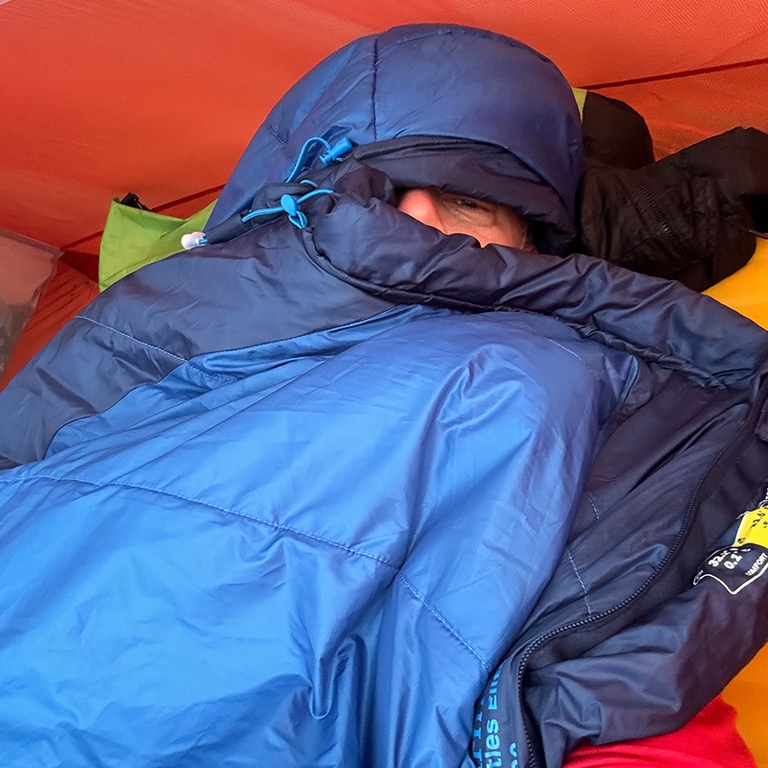
Buying Advice
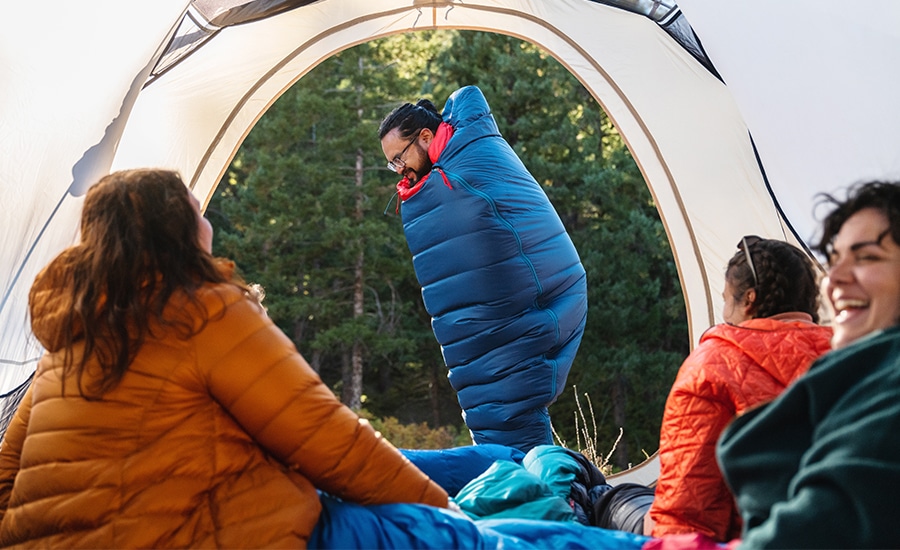
A quality sleeping bag can make or break your next camping adventure, but it may feel daunting if you don't understand what to look for before making your choice. Here are a few factors to consider when snagging yourself a sleeping bag, regardless of its price tag.
Weight and Size
When it comes to car camping, you can simply pick the warmest, roomiest sleeping bag you like because you won't be shouldering it. For a rundown on all the things to consider, read our article, "How to Choose Sleeping Bags for Camping."
For backpacking, however, you'll want the warmest, roomiest sleeping bag that fits inside your pack and doesn't weigh you down. The distinction between backpacking and camping bags is not a hard-and-fast one, but backpacking bags are generally more lightweight, pack down smaller and provide more warm for the weight. So, if you'll be car camping and backpacking, go with a backpacking bag because every ounce counts when you carry it in a pack rather than in a car. You can of course tote however much weight you'd like backpacking, but in this guide, the Marmot Trestles Elite Eco 20, Mountain Hardwear Bishop Pass 15 and REI Co-op Magma 15 are the best for backpacking. They're lighter and a bit more compact than the Big Agnes Echo Park 20, which is heavier at 4 lbs 12 oz. Learn more about How to Choose Sleeping Bags for Backpacking.
Note that some sleeping bags have a men's or unisex version and a women's version. Though this is how the brand has distinguished them, a more helpful delineation is to think of them as "warm sleeper's" and "cold sleeper's."
Warm sleeper's bags (or men's or unisex) have bigger dimensions and more forgiving temperature ratings. Cold sleeper's bags (or women's) have smaller dimensions and warmer temperature ratings thanks to added insulation. That often makes the cold sleeper's version of the bag heavier and bulkier, despite its smaller dimensions.
Width and Length
The sleeping bags in this guide are all available in wide and long sizes to fit more folks. When looking for a sleeping bag, consider three dimensions: the circumferences around the shoulders and the hips (both are posted in the specs for each review here), and the length.
In a mummy (or tapered) sleeping bag (a common shape for backpacking bags), a standard shoulder girth is between 60 and 64 inches while the hip girth is typically in the ballpark of 58 inches. The sleeping bags in this lineup are broader at each point—for instance, the Big Agnes Echo Park 20 is 80 inches at the shoulder and 74 inches at the hips. The best way to find a perfect fit for you is to go into a store and try some out, but you can always estimate your dimensions at home with a tape measure.
The third measurement—length—should be considered, particularly if you're taller than 6 feet. Most standard-size sleeping bags are 72 inches long, but many are available in longer dimensions. Of the sleeping bags in this guide, the men's long version of the Marmot Bishop Pass and the Big Agnes Eco Park fit up to 78 includes with the REI Co-op Magma 15 Sleeping Bag not too far behind at 77 inches in length. Typically called "long," these varieties often add up to an additional 6 inches. Wide sizes, which provide more girth at the shoulders and hips, also tend to be about 6 inches longer.
Type of Insulation
Sleeping bags are filled with either down insulation or synthetic insulation. In general, down insulation (made from goose or duck plumage) is lighter and more packable, offering the best warmth to weight. Down isn't inherently water-resistant, but today, most is treated to make it hydrophobic. Down insulation is also very durable and will likely hold up to years of packing and unpacking it into a stuff sack. Trade-off: It tends to cost more than synthetic.
The Mountain Hardwear Bishop Pass 15 and REI Co-op Magma 15 use down insulation.
Note: If you opt for a down sleeping bag, be sure to check out the ethical practices of the company making your sleeping bag. These days, most outdoor brands have standards that protect the welfare of the animals, but it's a good idea to be informed.
On the flipside, synthetic insulation (like polyester) retains more warmth when wet, making it a popular choice with folks who live in moist climates. It also dries faster than down and is less likely to aggravate allergies. As an added bonus, it is almost always cheaper than down, too. Synthetic insulation is bulkier than down, however, and often comes with a weight penalty.
The Big Agnes Echo Park 20 and Marmot Trestles Elite Eco 20 are made with synthetic insulation.
Shape
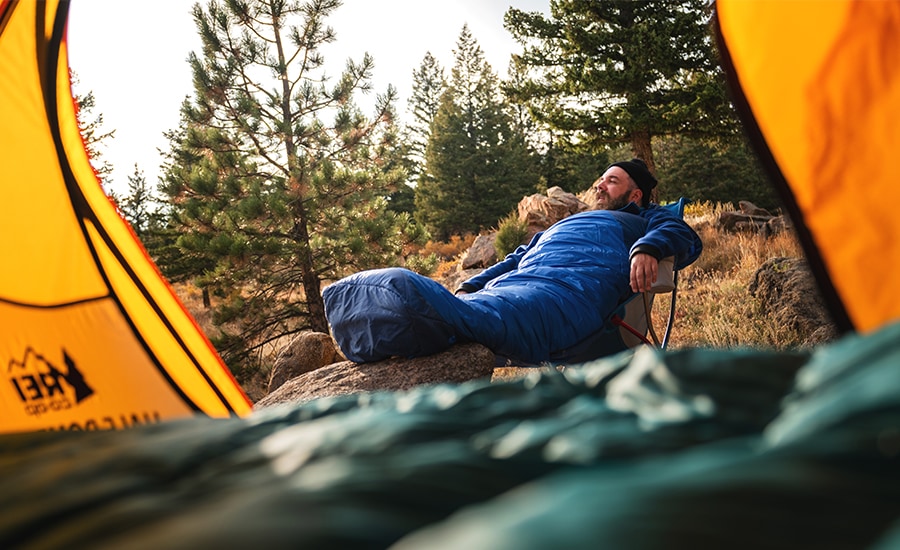
In this guide, you'll see two shapes of sleeping bags: mummy and semi-rectangular.
A mummy is wider in the shoulders before tapering at the knees and footbox. This eliminates extra space inside the sleeping bag, making it easier to create and maintain warmth. It also cuts down on materials and weight, which makes this style popular in the backpacking and ultralight communities.
If it fits, a mummy bag will provide the most efficient warmth. The mummies in this lineup are the Marmot Trestles Elite Eco 20 (pictured above), Mountain Hardwear Bishop Pass 15 and REI Co-op Magma 15.
A rectangular sleeping bag looks just like it sounds: a large rectangle. The bag does not taper like a mummy bag does and instead maintains its shape to give campers maximum wiggle room. However, this shape does mean there is more dead space in the bag, making it tougher to stay warm.
That's why some brands, like Big Agnes, have gravitated toward what's called a semi-rectangular shape. This style of sleeping bag cashes in on the comfort of a traditional rectangular bag while cutting some corners (literally) to save an iota of space and weight.
The Big Agnes Echo Park 20 is semi-rectangular.
Temperature Rating
We could pen a thesis on how temperature ratings are determined, but for you, dear reader, all you need to know is that the number in the name of the sleeping bag is pretty close to what its lower limit is. So our most basic advice is to purchase a sleeping bag with a number that's 10°F to 15°F lower than what you expect to encounter on your coldest trips. (Err on the side of going too warm because you can always unzip your bag or kick a leg out.) For example, if you do most of your camping in the mountains where temperatures drop into the 30s at night, go for a bag that has 20 in the name.
In general, summer-season camping calls for bags rated to 30°F or higher. Three-season camping (which includes shoulder seasons) usually requires bags with ratings closer to 20°F. You won't find anything that much warmer for less than $200 on the market (the warmer the bag, the more it costs, generally).
Of course, choosing a temperature rating is an exercise in knowing yourself, too. If you're a person who is always cold, take that into consideration.
Being able to compare one brand's 20°F bag against another's used to be a problem because outdoor brands tested them differently. Decades of work to standardize those ratings thankfully means nearly all brands play by the same rules now, though those rules are complicated.
An "ISO" or "EN" temperature rating indicates the test standard used. Either requires rigorous, standardized testing and the two standards are roughly comparable. So, as long as a bag has one of those acronyms, you can compare their temperature ratings. Read our article, "Understanding Sleeping Bag Temperature Ratings" to learn more.
Note that, while these test standards can be applied to most backpacking bags, certain sleeping bags are not covered by the standards and are assigned temperature ratings by varying tests used by the brand.
Bags are assigned two temperature ratings: limit and comfort ratings. Lower-limit rating is the lowest temperature at which the bag will keep a warm sleeper comfortable and is generally the temperature assigned to men's or unisex bags. Comfort rating is the lowest temperature at which the bag will keep the average cold sleeper comfortable and is generally the temperature assigned to women-specific bags. If a temperature rating omits the term "comfort" or "limit," then it's likely a brand's estimate, not an ISO or EN test result.
Cold sleeper's (women's) bags that use the warmer "comfort rating" as their standard will inevitably be heavier than the equivalent warm sleeper's (men's) bags. It simply requires more of a given insulation to achieve more warmth.
A temperature rating is not a guarantee of warmth. Standardized ratings are super important because you can more reliably compare bags from different brands. But metabolisms vary greatly from person to person, as do variables like the pad you pair your bag with, humidity, wind, type of shelter, ground conditions, clothing and personal preferences.
Methodology
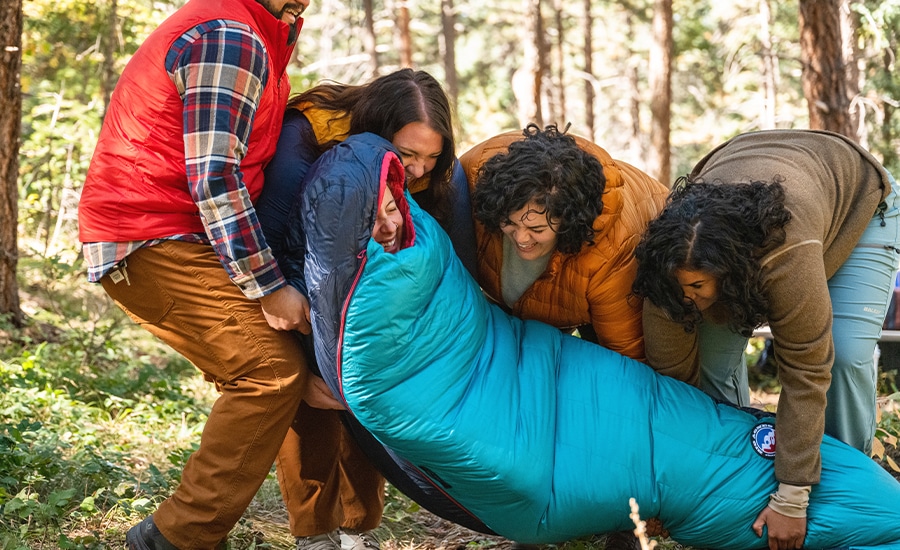
In ongoing gear testing, we asked two dozen co-op members from around the country to put pillow to dirt in an effort to test the best inclusive-size sleeping bags available at REI Co-op. Our testers ranged in size from XL to 4X. During the testing months, they frolicked through alpine meadows, endured unseasonable snow, hunkered down in wind and picked grit from their teeth during canyon-country epics—all in an effort to bring the best feedback and testing notes.
These co-op member-testers evaluated each sleeping bag on its warmth, comfort, size, durability, packability and features, also taking sustainability attributes and price into account. We combined their ratings and took the average to find the overall scores listed here. The four sleeping bags in this guide earned the highest scores in our round-robin; the REI Co-op Magma 15 Sleeping Bag was a top overall performer and earned an REI Co-op Editors' Choice Award. The Big Agnes Echo Park 20 Sleeping Bag was our pick for car camping, and was also commemorated with an REI Co-op Editors' Choice Award.
Editors' note: We are continually testing sleepings bags as new products come on the market and will update this guide accordingly.
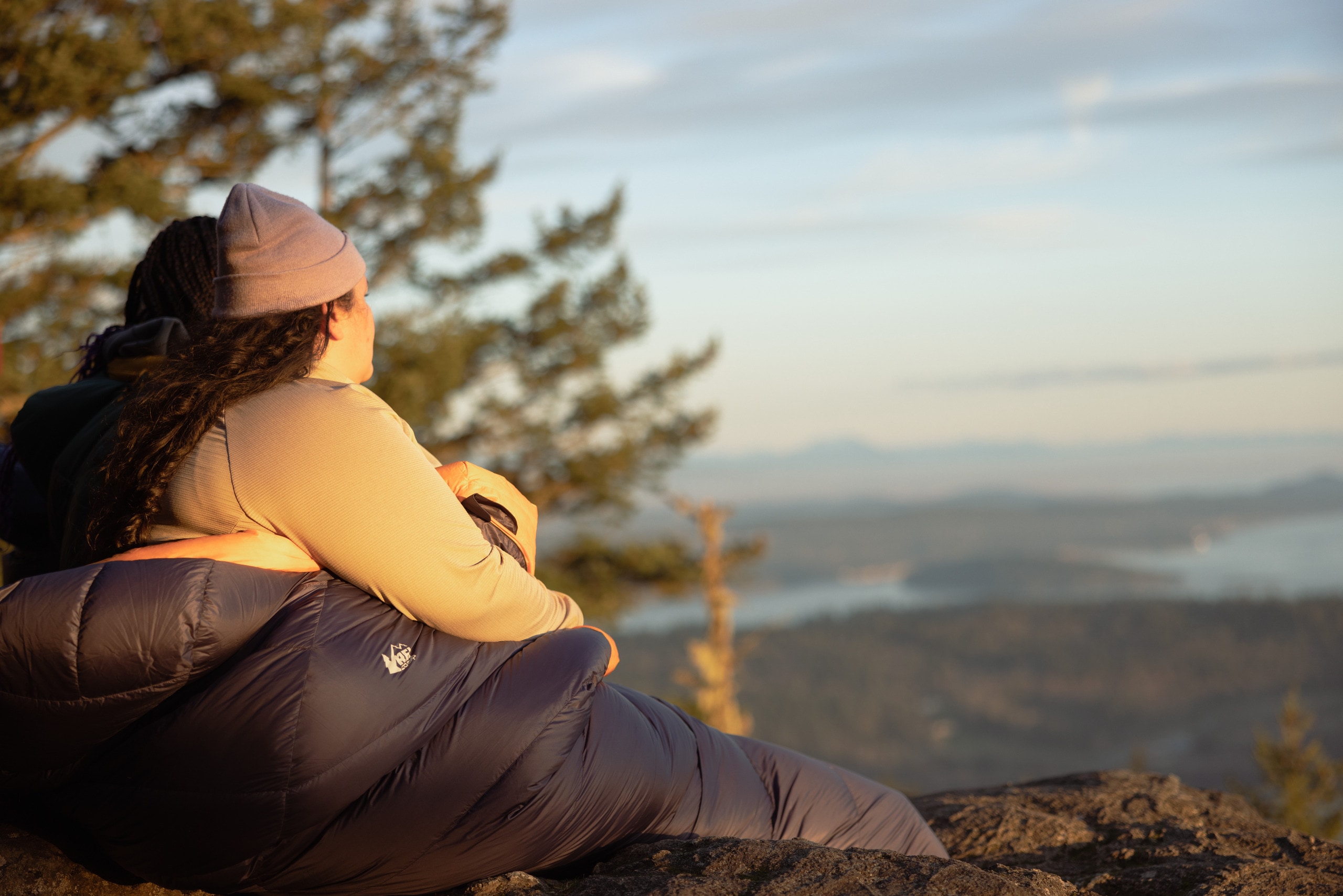




![Magma 15 Sleeping Bag [Hood]](/media/79b342b7-c0b2-4480-8970-6a05ac2b17d3/?size=440)


![Echo Park 20 Sleeping Bag [Sleeping pad not included]](/media/a28057c7-d4c8-47c3-9601-60eb2eab3a9d/?size=440)

![Echo Park 20 Sleeping Bag [Sleeping pad not included]](/media/f10dc63d-9d57-4565-bbac-071e2cae414d/?size=440)








![Trestles Elite Eco 20 Sleeping Bag - Women's [Full length zipped (Midnight/Storm)]](/media/87358011-f2df-46f8-9180-c63985e2127b/?size=440)
![Trestles Elite Eco 20 Sleeping Bag - Men's [Full length zipped (Estate Blue/Classic Blue)]](/media/75203b6e-ddbf-495f-8c0e-ef28e914f4a3/?size=440)
![Trestles Elite Eco 20 Sleeping Bag - Women's [3/4 head view (Midnight/Storm)]](/media/71386239-ea6d-4e09-b235-27d16f90a255/?size=440)
![Trestles Elite Eco 20 Sleeping Bag - Men's [3/4 head view (Estate Blue/Classic Blue)]](/media/5b591766-8a62-43be-8b53-49a8c1553975/?size=440)
